Content
All issues / Volume 16 (2022) / Issue 11 (November)
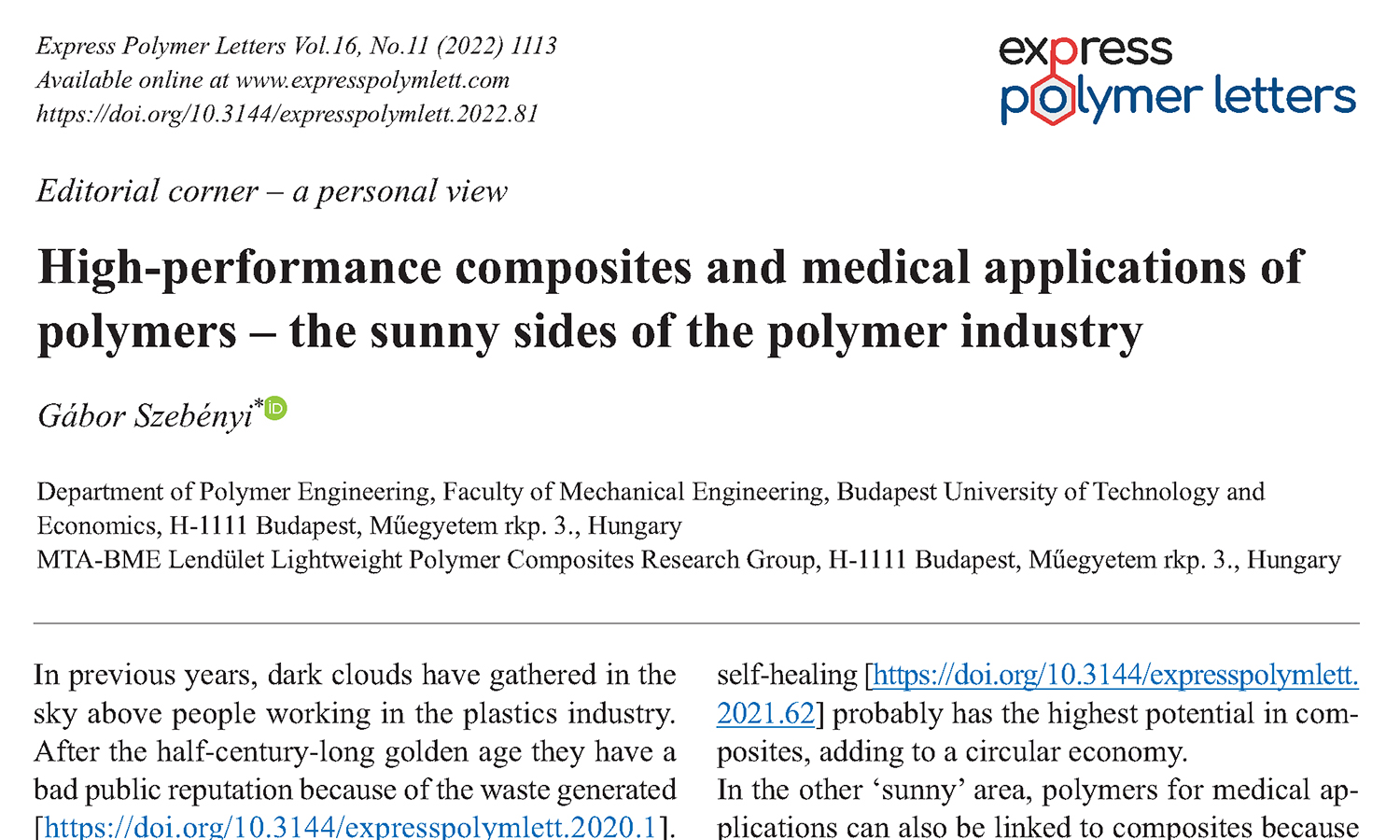
This is an editorial article. It has no abstract.
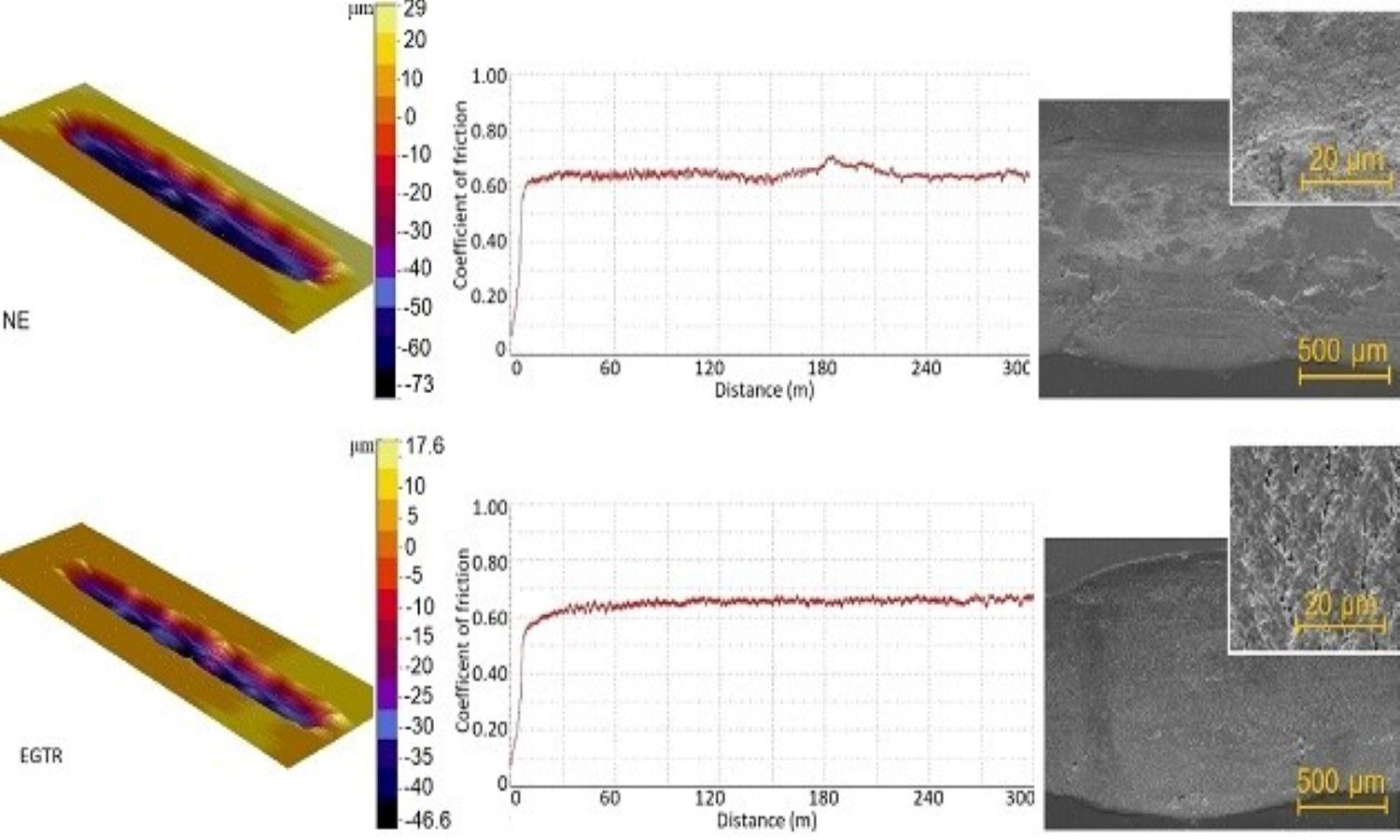
The present work aims at evaluating the mechanical and anti-corrosion behaviour of epoxy coatings modified by recycled waste tire products. In this study, the epoxy coatings reinforced with ground tire rubber (GTR), devulcanised ground tire rubber (DGTR), pyrolytic carbon black (PCB) and original carbon black (CB) particle contents were prepared and applied to the galvanised steel substrate. Micro-mechanical tests (nanohardness and microscratch) were used to measure the mechanical properties of the coatings. Tribological and corrosive performance of the coatings were evaluated using reciprocating ball-on disc test and salt spray corrosion test (5 wt% NaCl), respectively. The experimental results showed that the recycled waste tire products reinforced composite coatings significantly improved resistance to wear and corrosion inhibition property. In the study, the most remarkable results were the increase in wear resistance by 77.7% in the coating strengthened with DGTR. The highest corrosion resistance was obtained in the epoxy coating reinforced with PCB, no white rust was observed on the coating during the salt spray test (1000 hours), and the lowest blistering degree of the sample after the test was obtained as 8F.
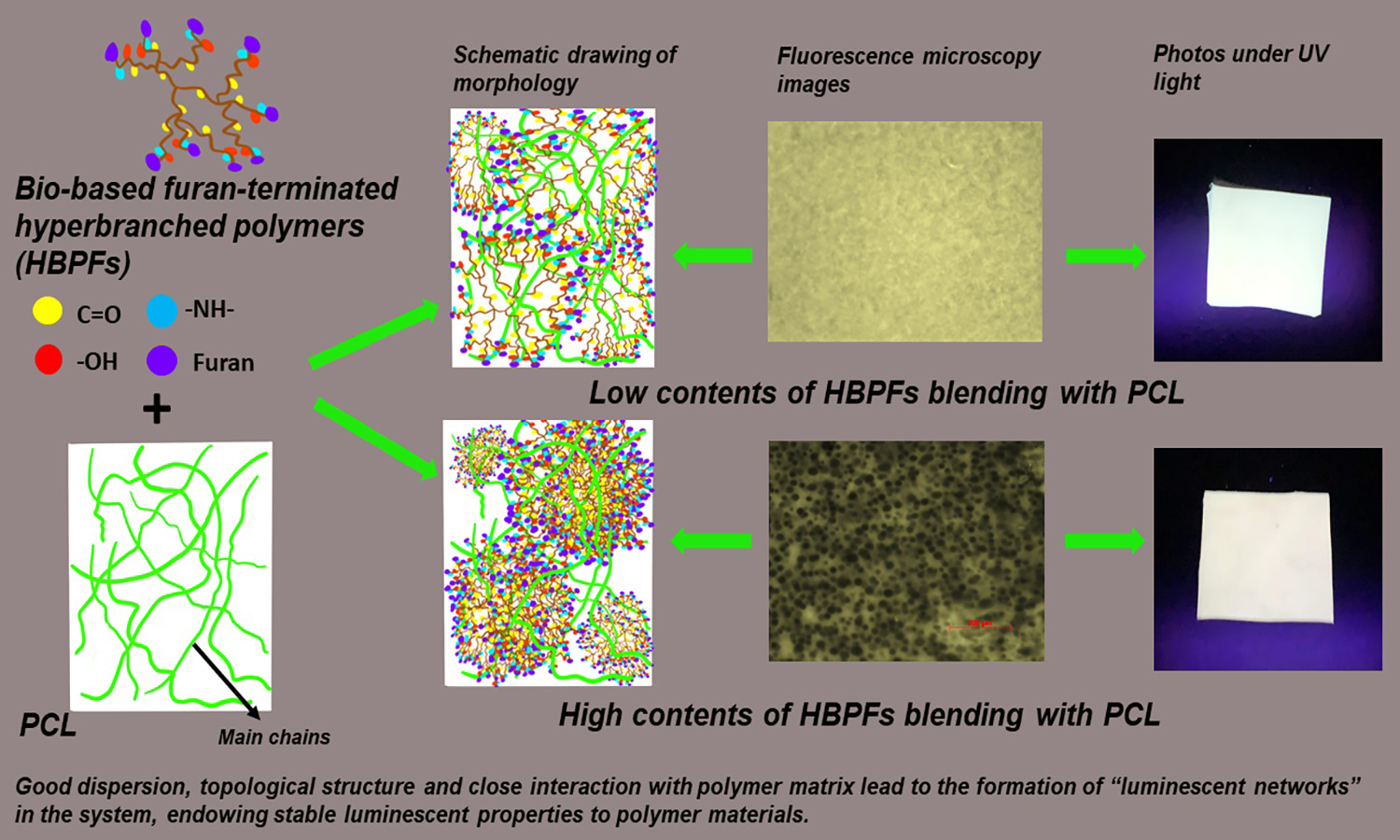
It is the pursuit to give biodegradable polycaprolactone (PCL) luminescence properties while maintaining its biocompatibility in a feasible way. For this purpose, bio-based luminescent furan-terminated hyperbranched polymers (HBPFs) have been synthesized, and the degrees of branching (DB) of HBPFs are varying from 0.47 to 0.55 as the changing feeding ratio of monomers. All HBPFs exhibit low glass transition temperature (Tg), great fluidity, and bright yellow fluorescence in solution under ultraviolet (UV) light. The ultraviolet/visible (UV/Vis) and fluorescence spectra show that the HBPFs have characteristics of cluster-induced emission (CIE) from the non-conventional chromophores with the concentrations increased. Furthermore, PCL-based materials blending with the HBPFs are also prepared. It is found that the PCL-based blends emit white fluorescence, and the fluorescence intensity is influenced by the contents and DB of HBPFs. The morphologies of HBPFs/PCL show that the HBPFs with low contents and high DB is well-distributed in PCL, which is conducive to electron transmission and groups-clustering, further enhancing fluorescence emission. The rheological analysis reveals that HBPFs could decrease the viscosity of blends, indicating that HBPFs can play a role as flow modifiers in melt processing. Crystallization behaviors show that the crystallization degree (Xc) of PCL is increased owing to the effects of heterogeneous nucleation of HBPFs (i.e. Xc for neat PCL is 60.3% while 5 wt%HBPF-3/PCL is 71.9%). As a result, the modulus of PCL blends is improved. This kind of biocompatible blends with good comprehensive properties and fluorescence characteristics are expected to be applied in the preparation of biomedical materials for in-situ non-invasive detection.
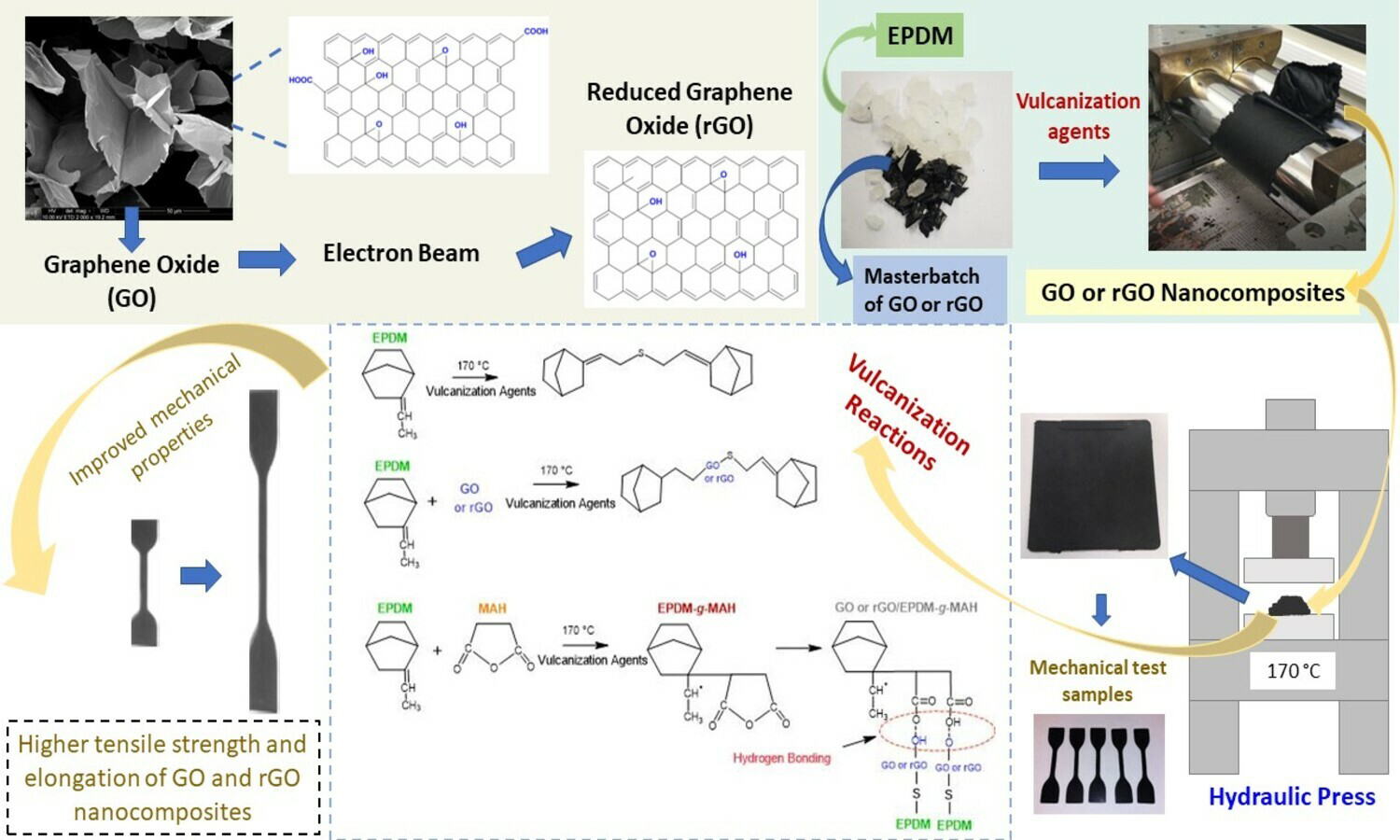
The interaction between reinforcing fillers and the elastomeric matrix determines the properties of the elastomeric nanocomposite. In this study, the properties of nanocomposites based on ethylene-propylene-diene monomer (EPDM) rubber compounds with graphene oxide (GO) and reduced GO (rGO) were investigated along with the effect of maleic anhydride (MAH) as a compatibilizing agent. GO- and rGO-containing nanocomposites were prepared using a combination of solution blending and torque rheometry processes. It was found that compositing with rGO reduced the optimal vulcanization times by approximately 5%. The addition of MAH improved the mechanical properties of the nanocomposites containing GO or rGO, with enhancements in elongation by 18 and 11% and in tensile strengths by 5 and 20%, respectively. The results showed good interactions between the nanoparticles and EPDM compounds. However, despite the good physicochemical affinity between MAH and GO, their simultaneous presence in the EPDM compound did not synergistically influence vulcanization and mechanical properties because of the excessive quantity of oxygen-containing functional groups present during the vulcanization process.
Coagulation methods and drying step are the key drivers of the dynamics of structuration of natural rubber during the maturation of coagula
Jidapa Noinart, Laurent Vaysse, Natedao Musigamart, Jérôme Sainte-Beuve, Albert Flori, Siriluck Liengprayoon, Kittipong Rattanaporn, Françoise Granet, Frederic Bonfils
Vol. 16., No.11., Pages 1161-1176, 2022
DOI: 10.3144/expresspolymlett.2022.85
Vol. 16., No.11., Pages 1161-1176, 2022
DOI: 10.3144/expresspolymlett.2022.85
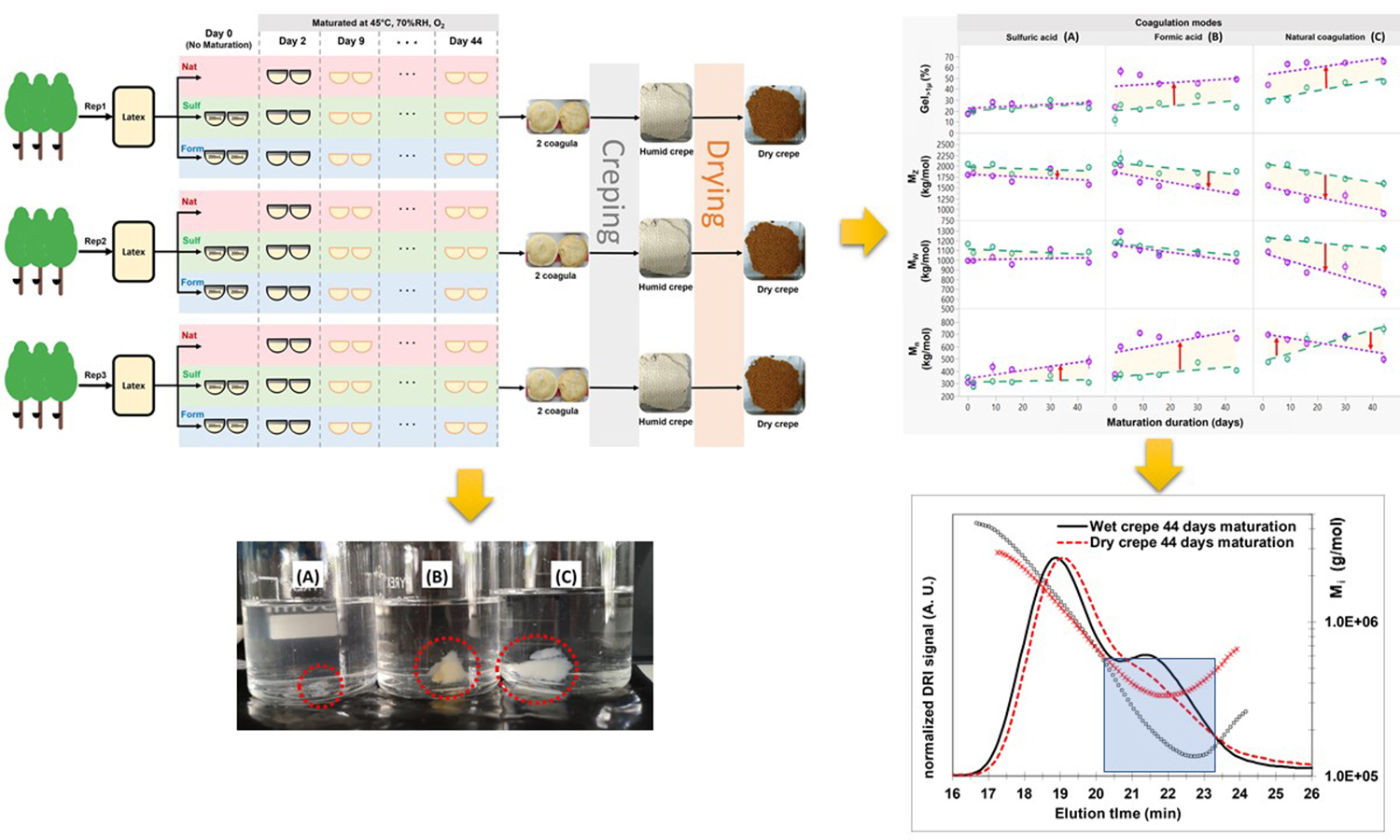
The evolution of the mesostructure (structuring dynamics) of natural rubber (NR) during maturation after different modes of coagulation is poorly known, especially inside wet coagula. Therefore, coagula made from 3 different coagulation modes (sulfuric acid, formic acid, and natural coagulations) with different maturation durations (0, 2, 9, 16, 30, and 44 days) were studied. The mesostructure of NR samples was analyzed using SEC-MALS on wet coagula and on wet and dry crepes. For wet coagula coagulated with acids, only Mz and Mw decreased slightly with maturation time, while Mn and Gel>1 μ had no significant evolution during maturation. On the other hand, for wet coagula after natural coagulation, all mesostructure indicators evolved significantly with maturation time. The results showed that structuration increased along maturation time, generating microaggregates with larger size and more structured macrogel inside wet coagula after natural coagulation. This study found that creping process (comparison of wet coagula and wet crepes) had only a moderate effect on the structuration of NR samples. However, the drying process (comparison of wet and dry crepes) had an important effect on the structuration of rubber, especially for natural coagulation and formic acid coagulation. Coagulation with sulfuric acid appeared to slow down the phenomena related to the structuration of microaggregates and macrogel.
Visible-light enhanced photocatalytic performance by lowering the bandgap of reusable TiO2/chitin and ZnO/chitin nanocomposites for trimethoprim degradation
Jonás José Perez Bravo, María Emilia Villanueva, Gabriel Ibrahin Tovar, Nora Judit François, Guillermo Javier Copello
Vol. 16., No.11., Pages 1177-1192, 2022
DOI: 10.3144/expresspolymlett.2022.86
Vol. 16., No.11., Pages 1177-1192, 2022
DOI: 10.3144/expresspolymlett.2022.86
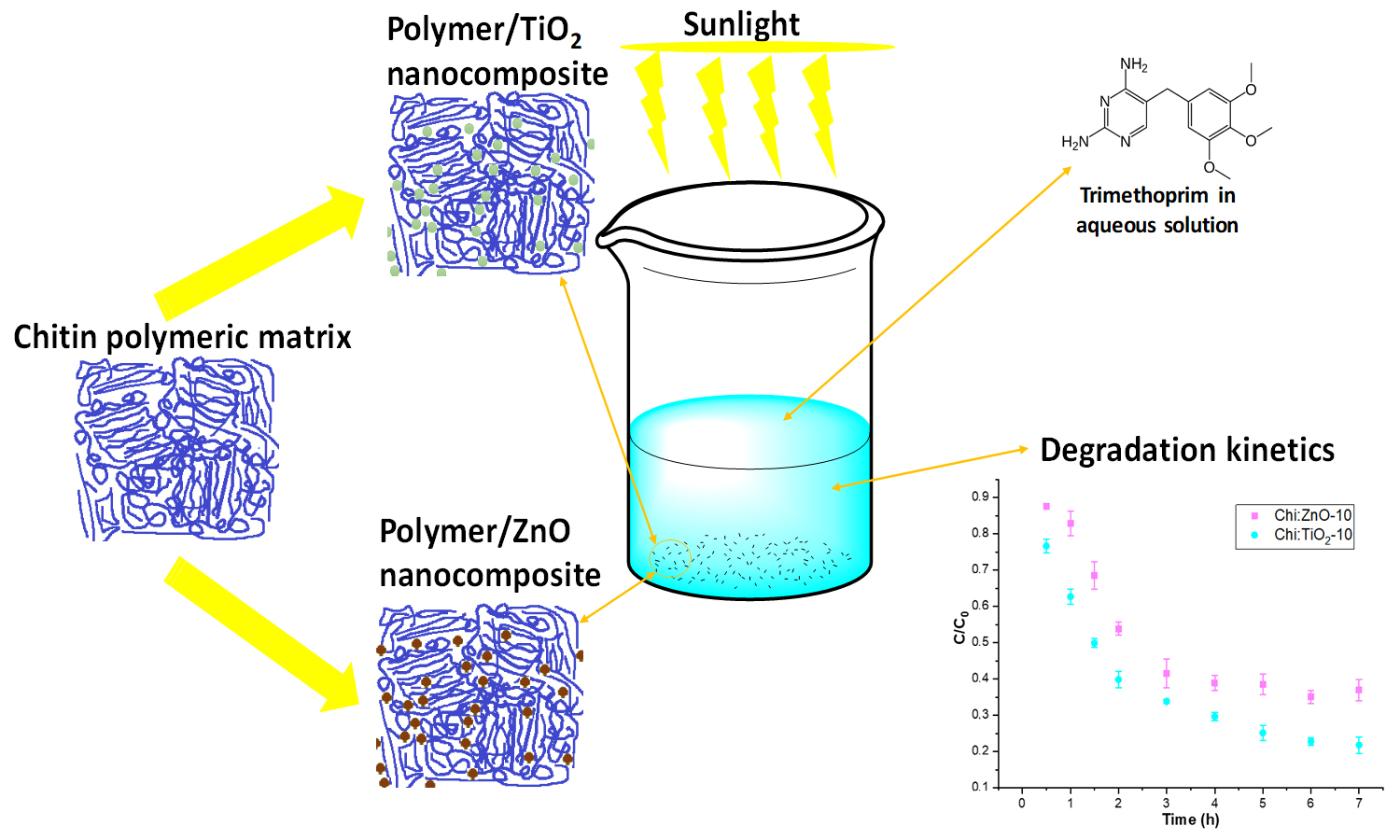
For a nanocomposite, the interaction among nanoparticles (NPs) and the polymeric matrix acting as support has a determinant role in the performance of the material in its intended application. Two UV-sensitive NPs (TiO2 and ZnO) were chosen in order to study the effect of their interaction with chitin in the photocatalytic degradation of trimethoprim, which is an emerging pollutant. Chitin-NPs composites were characterized by structural, thermal, optical, and photoelectrochemical techniques. NPs immobilization into the chitin matrix showed to affect both NPs in the same manner by influencing their photocurrent generation and decreasing the bandgap, which allowed taking advantage of the Visible-light spectrum. Trimethoprim degradation rates under simulated sunlight and chitin chemical stability upon reusability were evaluated. Both composites can be used over a wide range of pH, but the alkaline medium produced a decrease in the chitin:ZnO degradation efficiency. The chemical structure of chitin was not affected by the photocatalysis reaction, even after several cycles. As it was observed for the nude NPs, the chitin:TiO2 composite trimethoprim degradation efficiency was higher than the chitin:ZnO nanocomposite. Chitin matrix allowed an easy recovery of the NPs from the treatment medium and recycling of the material without loss of photocatalytic efficiency.
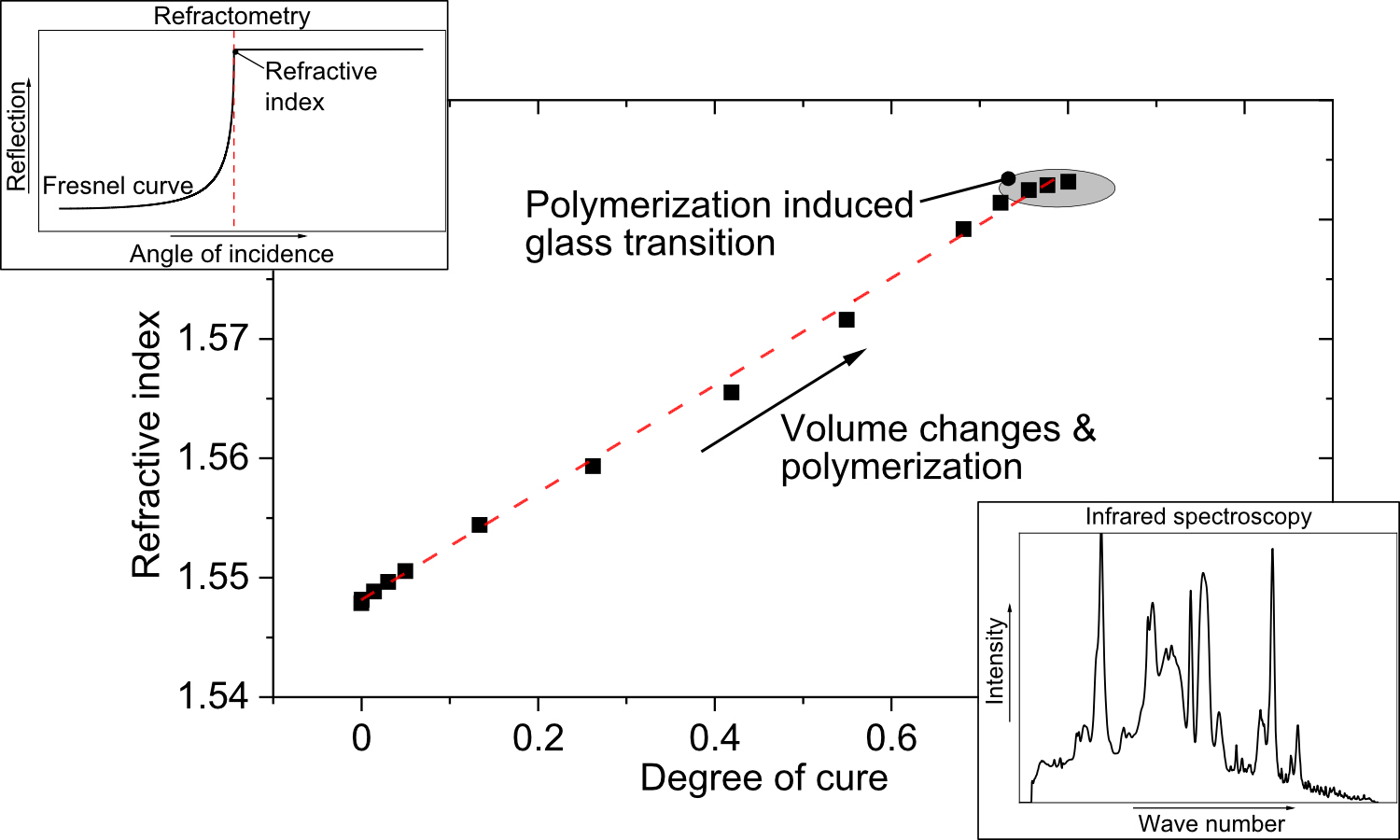
The current paper addresses the network-formation process of an epoxy polymer focussing on transition phenomena like the percolation threshold and the chemically induced glass transition. Based on a single type of measurement, different kinds of volume changes are used as sensitive probes to the morphological changes accompanying the polymerization process. Thereby, the rather new experimental technique of ‘Temperature Modulated Optical Refractometry’ (TMOR) allows to simultaneously obtain not only the volume shrinkage and the accompanying dynamic thermal volume expansion in the course of polymerization, but also the chemical turnover as a function of the refractive index. In order to test the applicability of the refractive index as a reasonable quantity to substitute respective infrared spectroscopy (IR) measurements, the network-formation is induced by homopolymerization reactions to specifically limit the degree of cure to a single spectral IR component. This countercheck is performed using IR by attenuated total reflection (ATR). Whereas the chemical-induced glass transition is clearly evidenced by the different kinds of volume changes, the percolation transition does not couple to these properties. However, the transition to the glassy state is highly variable and leads to large differences of the macromolecular-induced morphologies.
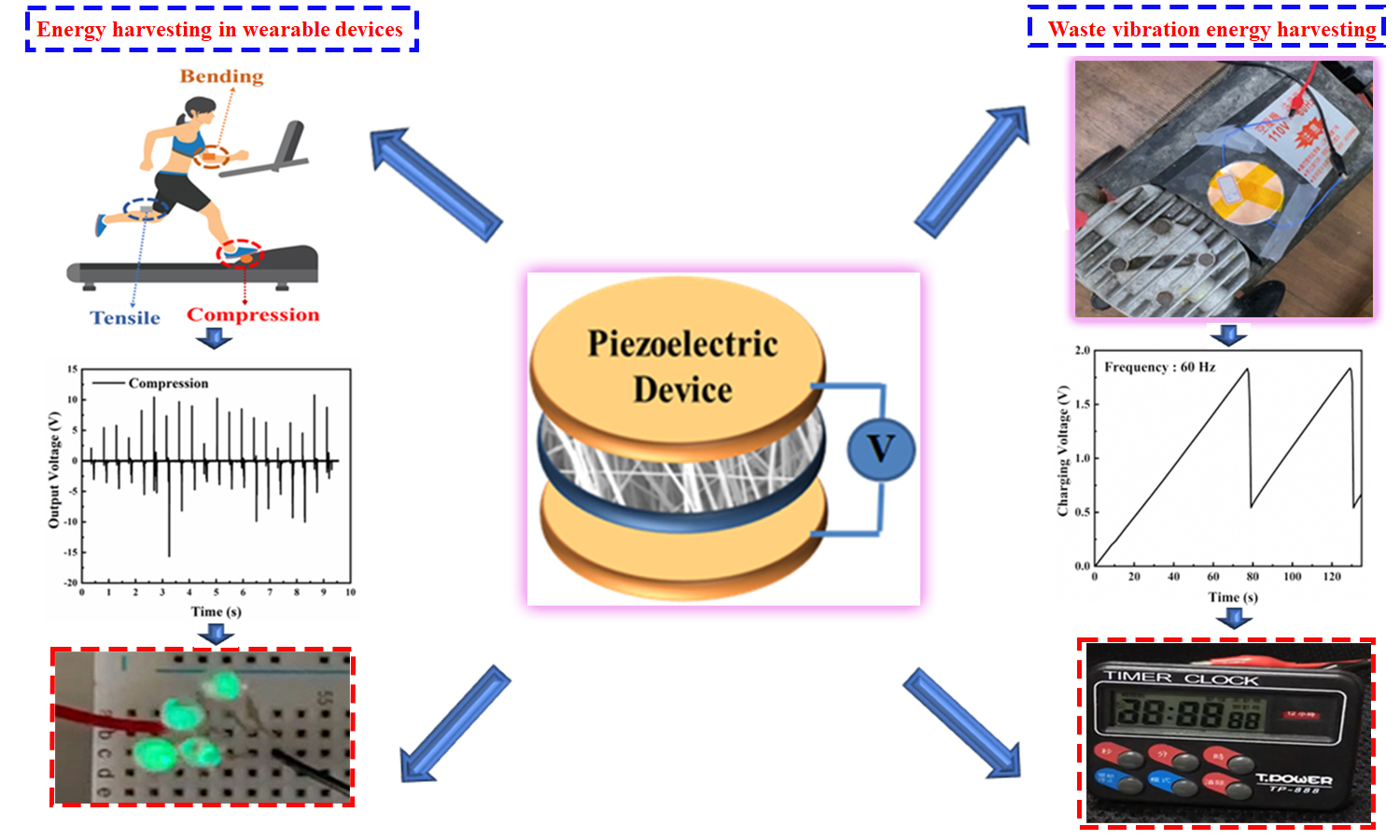
With the increasing demand for green and renewable energy, piezoelectric nanogenerators (PENGs) are in the infant stage for the next generation of wearable energy supplies. In this study, we synthesize an electrospun poly (vinylidene fluoride) zinc oxide (PVDF@ZnO) PENG device with different particle sizes of ZnO by solution electrospinning and study the effect of incorporation of ZnO and its particle size on the piezoelectric properties of the PVDF PENG device. We evaluate the piezoelectric properties of the PENG device under different mechanical conditions of tension, compression, and bending. The incorporation of ZnO nanoparticles remarkably enhances the piezoelectric response of PVDF under all the study conditions. In particular, the device with large-particle ZnO (PVDF@L-ZnO) PENG generates an electrical output current, voltage, and power density of 1308 nA, 5.6 V, and 2160 μW/m2, respectively, at a loading resistance of 10 MΩ under compression; 42 mV, 82 nA, and 28 μW/m2, respectively, at a loading resistance of 20 MΩ under tension; 2.8 V, 323 nA, and 320 μW/m2, respectively, at a loading resistance of 20 MΩ under bending, and we choose the compression result for further practical applications. In addition, we use the PENG device to harvest waste vibration mechanical energy from an air compressor machine with a frequency of 60 Hz. It harvests waste mechanical energy that turns on a liquid crystal display (LCD). The PVDF@L-ZnO PENG device also shows stable cyclic discharging and charging properties, which are crucial for practical applications. Therefore, the fabricated PENG device is a favorable candidate for wasted mechanical energy and converting it to electrical energy. We expect that it can play an important role in the problems related to renewable and green energy utilization.


